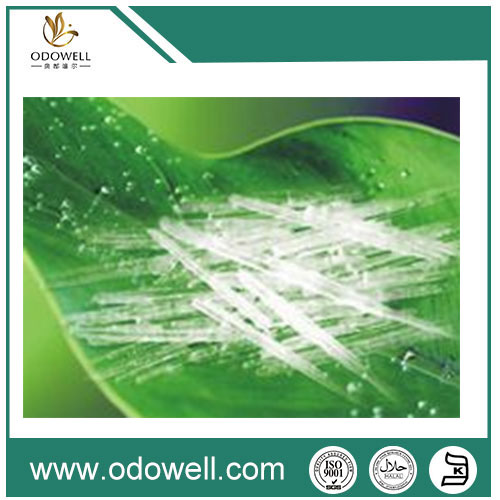Industrial extraction of peppermint oil and menthol from peppermint use steam distillation and organic solvent extraction. The former has low extraction efficiency and the latter has the toxicity of residual organic solvents. Using supercritical carbon dioxide to
extract menthol (menthol) from peppermint can eliminate the drawbacks of the above two methods. The yield is about 5 times higher than that of the steam distillation method and about 3 times higher than that of the organic solvent method. The product maintains pure natural characteristics, good quality, high purity, no solvent residual toxicity, easy to meet export requirements, and has better competitiveness , Can occupy the market. Menthol can be purified from natural mint crude oil or can be prepared by synthetic methods. The essential oil obtained by steam distillation of the above-ground parts (stems, branches, leaves and inflorescences) of mint, a plant of Lamiaceae, is called mint crude oil, and the oil yield is 0.5-0.6. There are many ways to synthesize thin brains.
Made from Citronellal
Taking advantage of the easy cyclization of citronellal into isopulegol, dextrocitronellal is cyclized into L-isopulegol with an acid catalyst (such as silica gel), and L-isopulegol is separated out and hydrogenated to form L-menthol. Its stereoisomers can be partially converted into dextro-citronellal by thermal cracking, and then recycled.
Made from Thymol
In the presence of aluminum m-cresol, the alkylation reaction of m-cresol produces thymol. After catalytic hydrogenation, all four pairs of menthol stereoisomers (ie racemic menthol; racemic neo-menthol; racemic isomenthol and racemic neo-isomenthol) are obtained. It is distilled, the spin-menthol fraction is eliminated, the ester is produced and then recrystallized repeatedly, and the isomers are separated and optically resolved. The separated L-menthol ester is saponified to obtain menthol.
Racemic menthol can be separated from the other three pairs of isomers by distillation. The remaining mixture of isomers can be balanced into racemic menthol, racemic neomenthol, racemic isomenthol under thymol hydrogenation conditions. The ratio is 6:3:1, and the content of new isomenthol is very small and can be ignored. From the above mixture, racemic menthol can be further separated. Racemic menthol is crystallized with L-ester in saturated benzoate solution or its ultra-cold mixture, separated and saponified to obtain pure L-menthol; unnecessary dextro-menthol and other isomers can be balanced under hydrogenation conditions Converted to racemic menthol.
Made from peppermint oil
After freezing peppermint oil, crystals are precipitated, and the crystals obtained by centrifugation are recrystallized with a low boiling solvent to obtain pure L-menthol. The mother liquor after removing the crystallization still contains 40%-50% menthol, and also contains a relatively large amount of menthone, which is converted into a mixture of L-menthol and D-neomenthol by hydrogenation. Part of the ester is saponified, crystallized, distilled or made into its boric acid ester, and then separated into other parts of peppermint oil to obtain more L-menthol.


